Best
OVERALL HARP
-
Overall: Tonal range: 1st Octave E to 6th Octave A
-
Best Feature: 40 Strings - Same string spacing and same string tension as in pedal harps
-
TedScore™: 9/10
Best
OVERALL
LYRE
Gear4music High-quality Lyre!
-
Overall:
8 String Portable Harp -
Best Feature:
Made From Hand Carved Maple -
TedScore™: 10/10
Best
OVERALL ELECTRIC HARP
-
Overall: Tonal range: 6th octave C to 2nd octave C (C - c ''')
-
Best Feature: Built-in preamp with volume and tone controls
-
TedScore™: 9/10
I’ve always found stringed instruments fascinating, and the harp and lyre are no exceptions.
Both have strings and produce music but have unique sounds and played different roles throughout history.
This makes us think about the difference between harp and lyre.
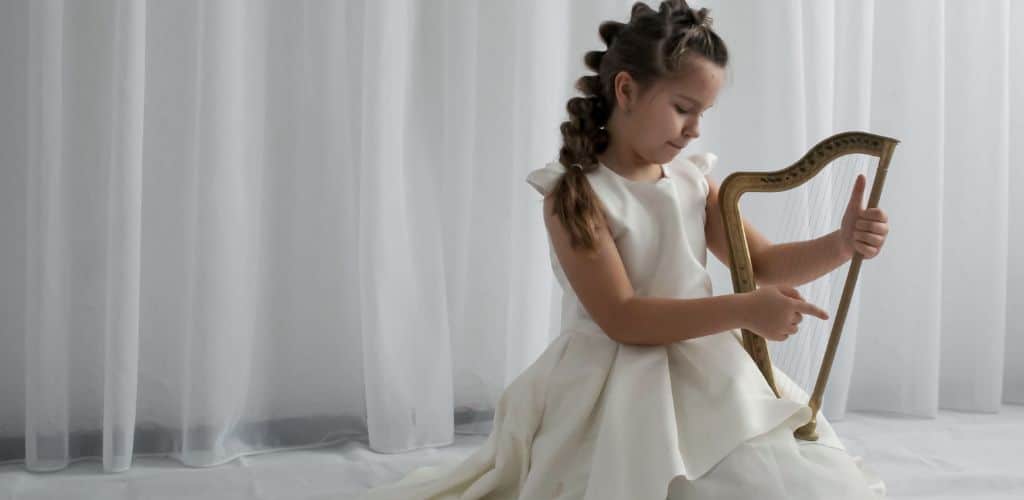
If you are interested in both the harp and the lyre, choosing which one to get between the two instruments is not that easy. You must decide between portability, budget, and the sound or genre you want to learn and master.
It’s like deciding which of your two favorite ice cream to buy with a budget. You both love it, but you can only buy one within your budget!
Don’t worry! I’ll explain the difference between these heavenly instruments to help you decide which one best suits you. So, keep reading!
Interestingly, despite their differences, the harp and lyre are significant in music.
They embody the elegance and complexity of musical instruments, each with a voice that has sung through the ages.
Historical and
Cultural Context
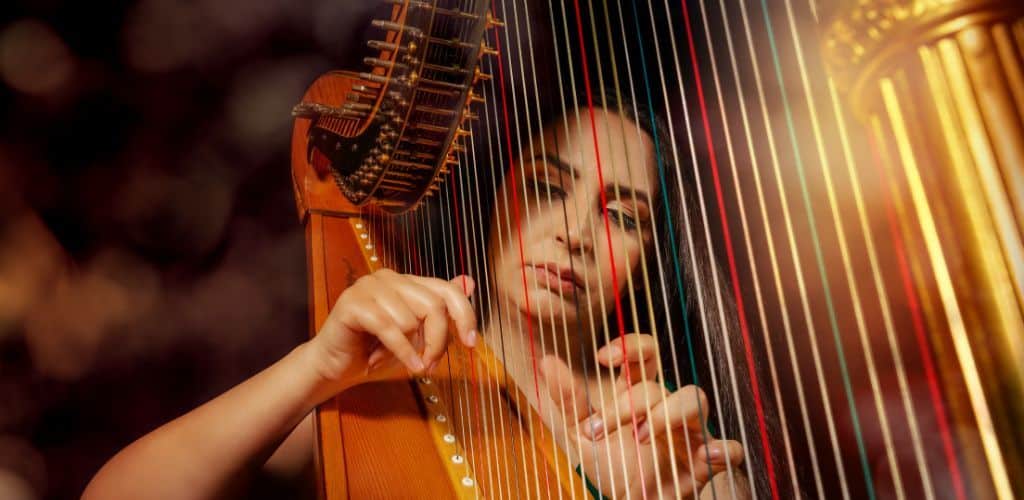
I’m excited to share a tidbit about the rich history of harps and lyres! Their stories twist and twirl from ancient lands to modern hands.
Origins of the Harp and Lyre
The harp goes way back to ancient Egypt. It was a favored instrument of the pharaohs, its silhouette as iconic as the pyramids.
Meanwhile, the lyre began its own journey in ancient Greece, gently cradled by poets and philosophers. Ancient Greeks strummed the Greek lyre, weaving melodies into the heart of their vibrant culture.
Evolution into Modern Instruments
Through the Middle Ages, the harp evolved, becoming a beacon of folk music and classical music across Europe. It’s been intertwined with the very essence of European musical evolution.
On the other hand, the lyre strummed a path through the ages—its form adapting from the Renaissance to modern music, never losing its soulful touch.
These instruments found new life in varying musical genres. They’ve echoed through popular music, becoming timeless ambassadors of their ancient legacies.
Physical Attributes and Playing Techniques
Before getting into details, know this: the harp and lyre are as distinct as they are elegant in their playing.
Now, let’s unravel these differences and see the comparison, shall we?
Design and Construction
Majestic frame design with strings attached to a soundboard.
Grand triangular shape with a straight or subtly curved neck.
Strings made of animal gut, nylon, or metal across—a sight to behold!
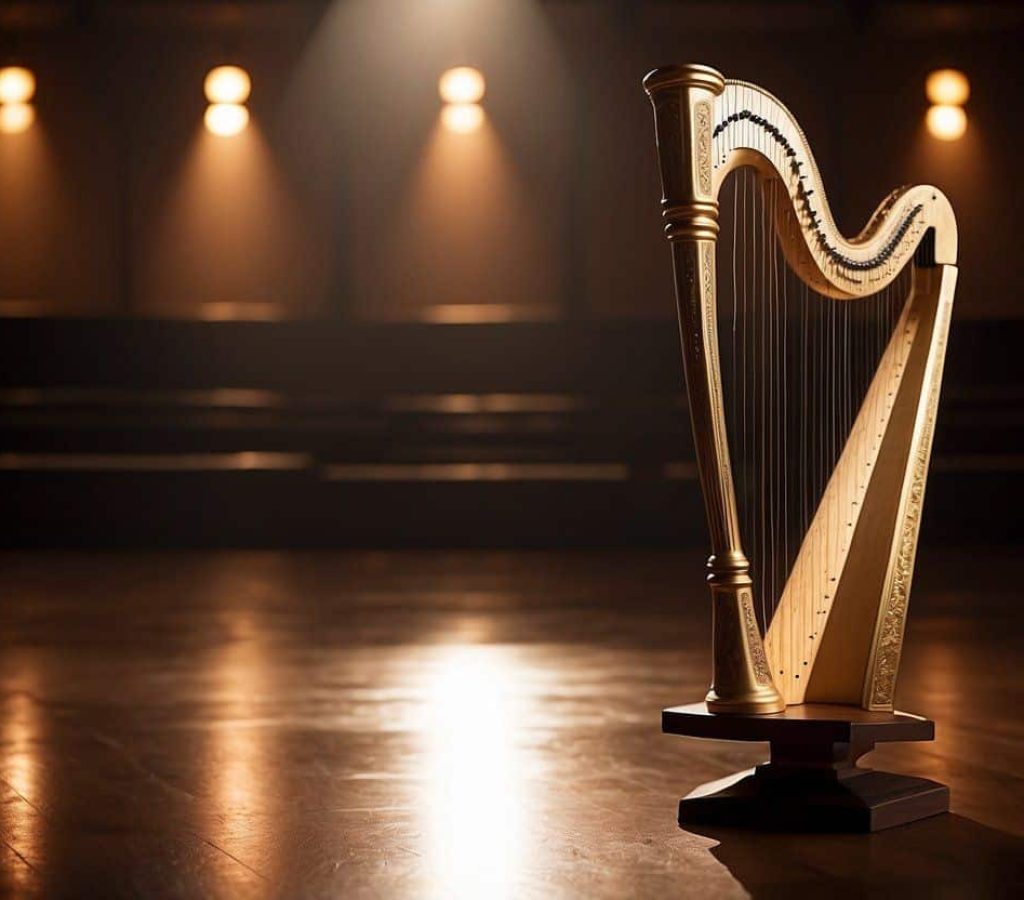
The engineering of a harp’s body allows for a range of sizes; from the lofty pedal harp that requires a stool to the personable lever harp, they vary in both heft and volume capabilities.
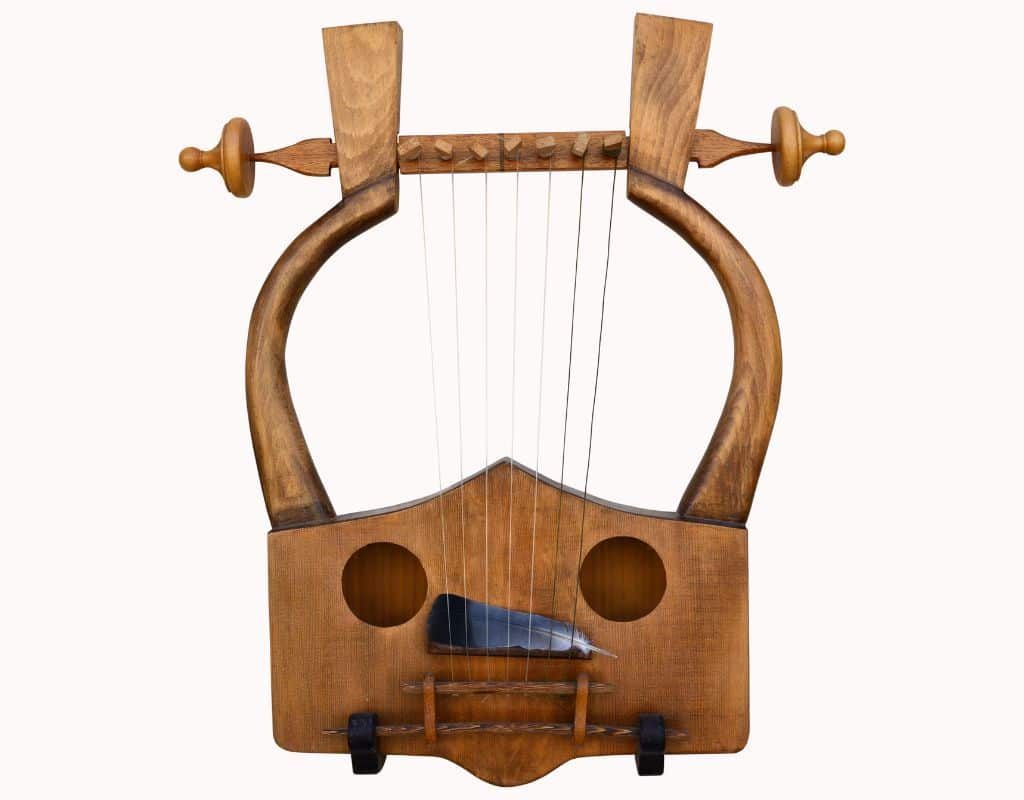
Held more intimately in the entire arm
Features a yoke attached to a resonator, typically made of wood
Lyre strings dance across a smaller frame.
Performance and Sound Characteristics
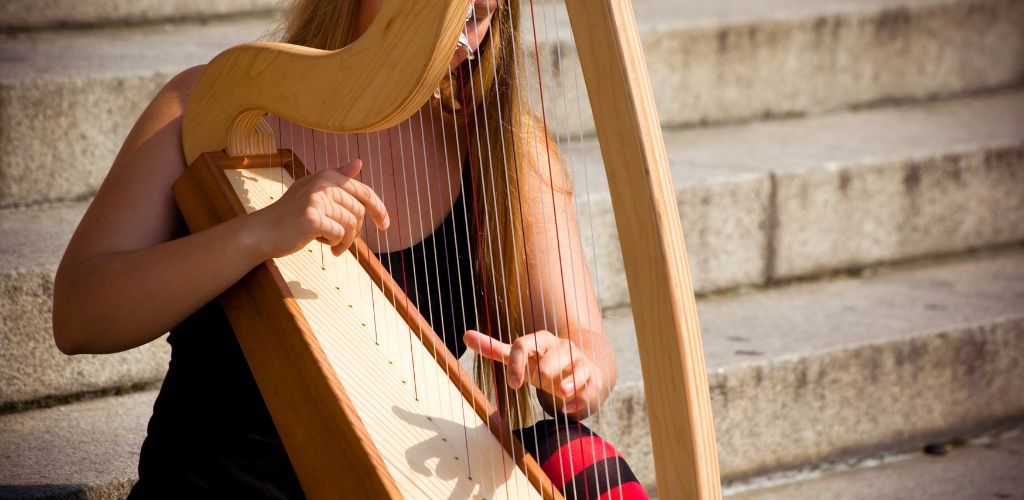
Plucking the strings of a harp results in a melodious sound that echoes with resonance, giving life to a melody that can flow with rhythm and pitch at the player’s command.
The harp uses both hands – one hand often cradles rhythm while the other coaxes out a melody, enabling accompaniment or complex solo pieces in enormous concert halls.
Lyres, however, encourages a more primal connection with music.
Lyre players may strum with their fingers or use a plectrum, creating a sound that’s intricate in its simplicity.
Its sound is like a whisper from the past, often lighter and more direct.
Each variation, from electric lyres to Celtic flavor, carries a unique tune, adding spice to the musical realm.
Variations and Accessories
Harpists maneuver with accessories like tuning pegs, pedals, or levers to ensure perfect pitch.
While the pedal harp can join an orchestra in a symphony of sounds, the electric harp can plug into an amplifier for a modern twist.
Lyres come in numerous forms, like the lyre harp, each boasting a string variation. Lyres can amplify their voice through a pickup, bow, or pick.
During lengthy harp practice and performances, a harpist might opt for an ergonomic chair or stool and invest in a case to protect their treasured instrument during travels.
With its more modest size and weight, the lyre is easier to transport and might need a cover to protect it.
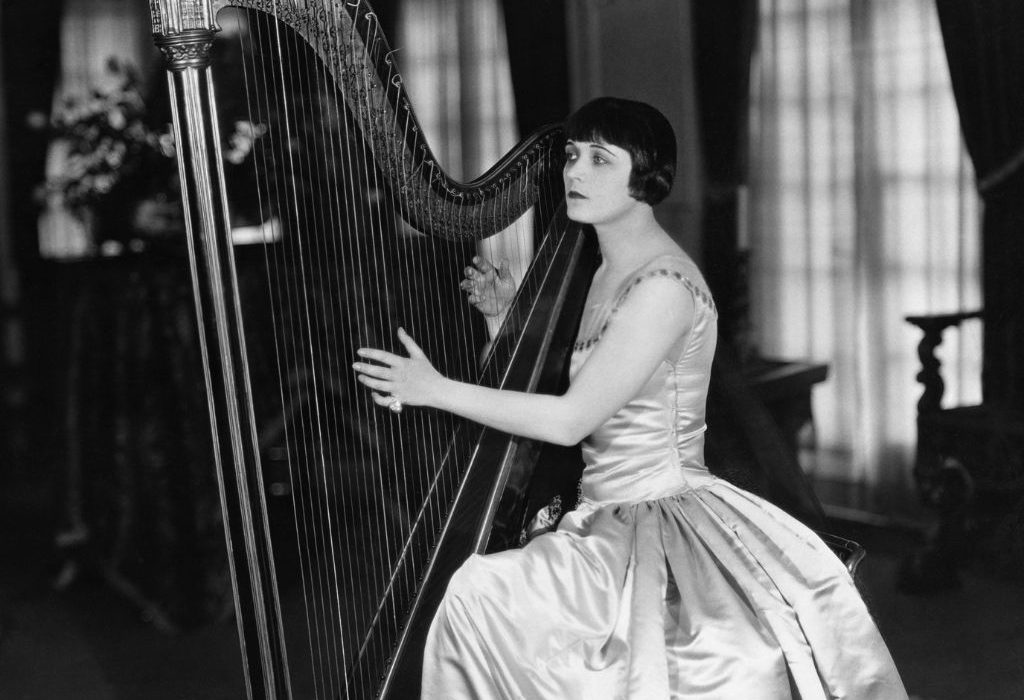
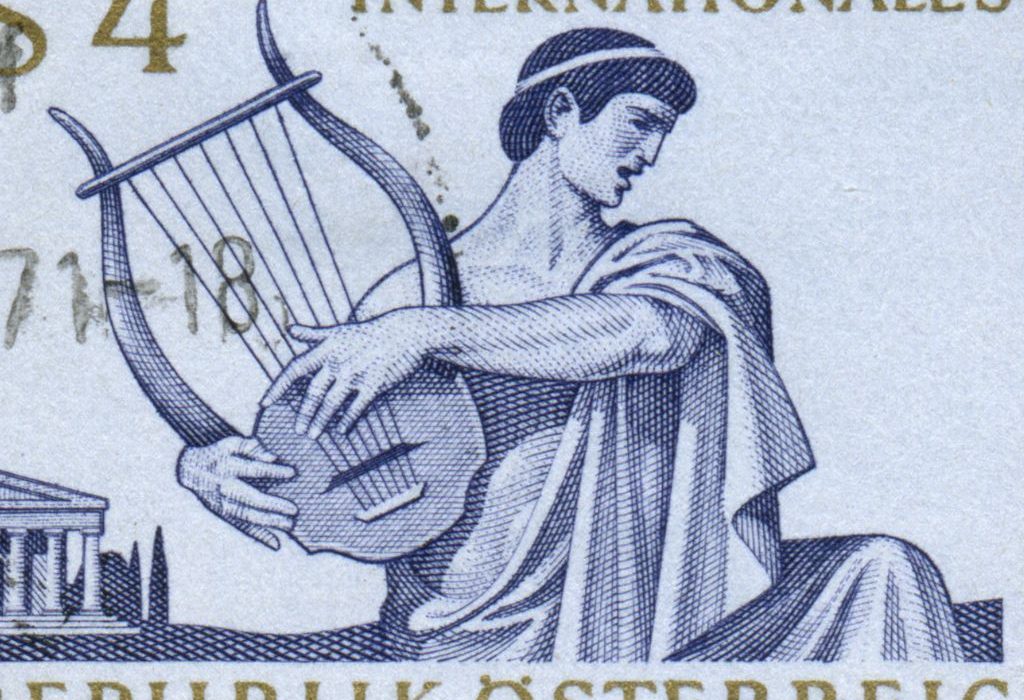
Harp and Lyres
That I Recommend
Lyon & Healy Prelude 40 Lever Harp
The Lyon & Healy Prelude 40 Lever Harp impresses me with its rich, full sound and exquisite craftsmanship, making it a joy to play for practice and performance.
This is the reason I invested in this musical instrument!
Lyon & Healy Prelude 40 Lever Harp
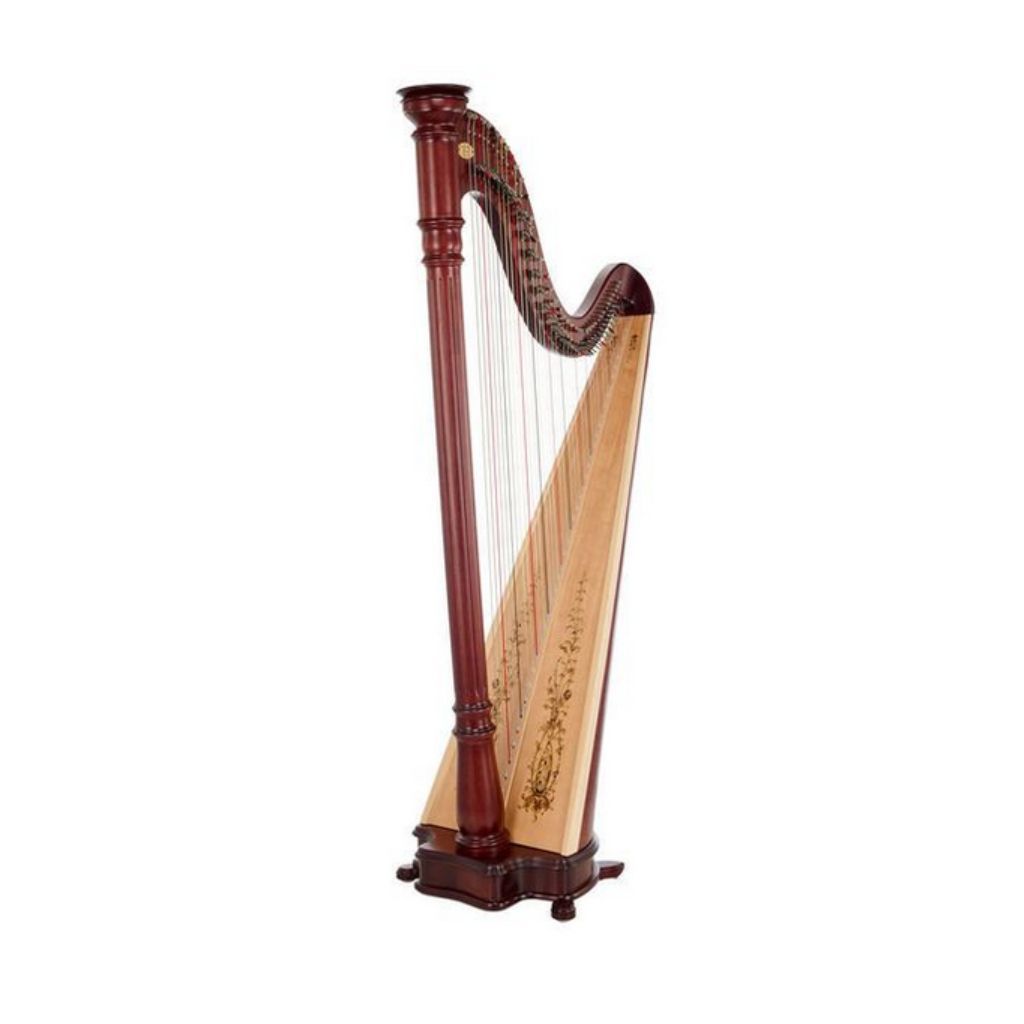
FEATURES: 40 strings, ranging from first octave E to sixth octave A
OTHER INFO: Solid spruce soundboard for enhanced sound quality
- Same string spacing and same string tension as in pedal harps
- Including tuning key, cover, wood crown, bronze colored crown, wood feet, bronze colored claw feet
- Expensive!
When you click ‘Check Price’, you’ll see there are loads of great places to buy this item. Our personal favorite is Sweetwater for the US, and Thomann and Gear4Music for the UK & Europe.
They are the largest music retailers, with excellent customer service, competitive prices, really fast shipping, and the longest guarantees.
The professional musician who wrote this article combined many things,
from the product build, manufacturer’s reputation through to feedback
from other users, to create our famous TedScore™.
Salvi SALDEL-ESS Delta Ebony
The Salvi Delta Ebony Electric Harp combines a modern guitar with an ancient harp design. Its captivating electric sound expands musical possibilities while maintaining the beauty of traditional harp aesthetics.
Salvi SALDEL-ESS Delta Ebony

FEATURES: Tonal range: 6th octave C to 2nd octave C (C - c ''')
OTHER INFO: Built-in preamp with volume and tone controls
- The strings of the Delta run over the bridge, which allows for playing techniques.
- The bridge pickup system provides a clear, defined sound
- Expensive!
When you click ‘Check Price’, you’ll see there are loads of great places to buy this item. Our personal favorite is Sweetwater for the US, and Thomann and Gear4Music for the UK & Europe.
They are the largest music retailers, with excellent customer service, competitive prices, really fast shipping, and the longest guarantees.
The professional musician who wrote this article combined many things,
from the product build, manufacturer’s reputation through to feedback
from other users, to create our famous TedScore™.
Lyre Harp by Gear4music
The Lyre Harp by Gear4music provides an enjoyable playing experience with its pleasant sound and simple, elegant design. It is a great introductory instrument for those new to the lyre.
Lyre Harp by Gear4music
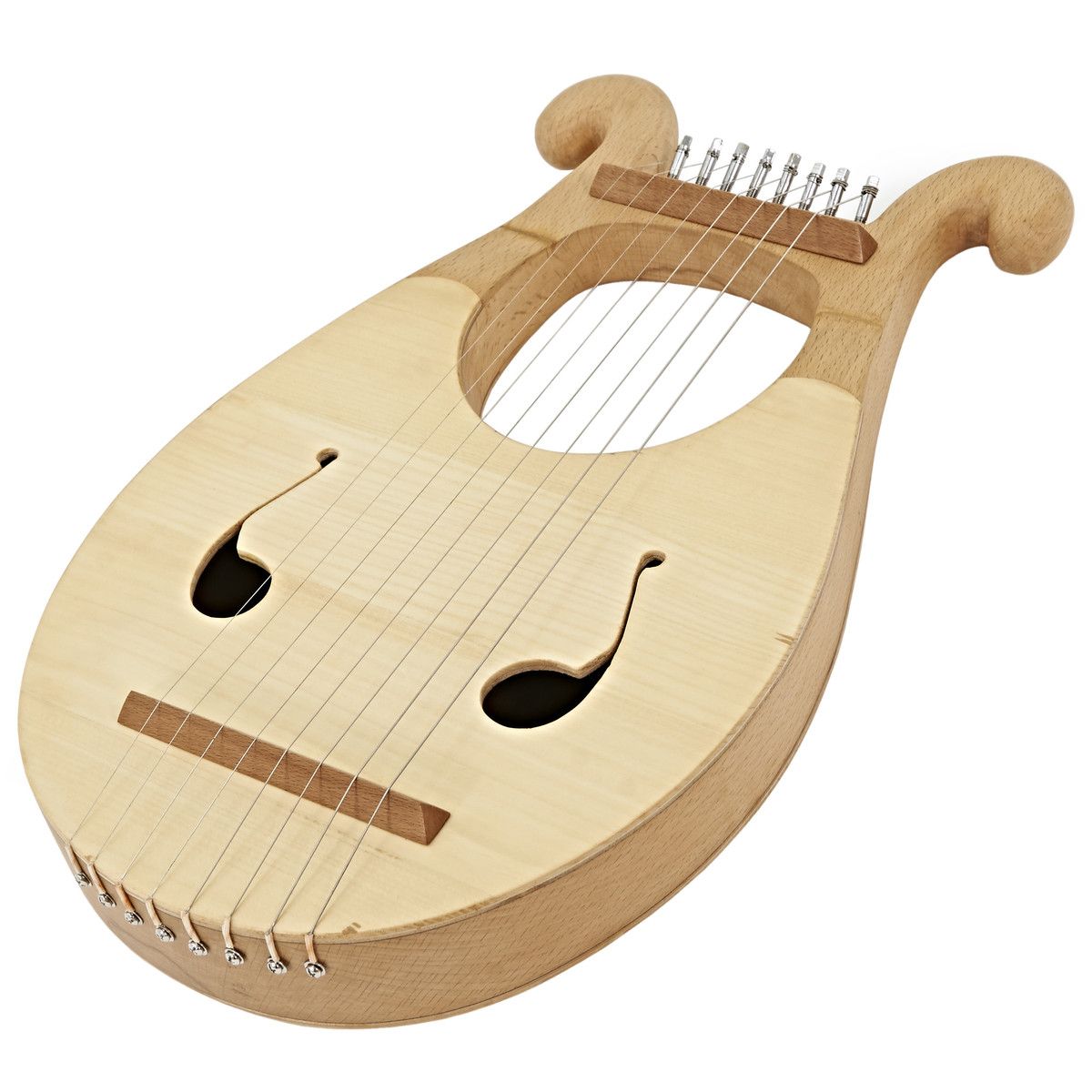
FEATURES: 8 String Portable Harp
OTHER INFO:Made From Hand Carved Maple
- Rich and Warm Tone
- Includes Gig Bag and Tuning Lever
- None!
When you click ‘Check Price’, you’ll see there are loads of great places to buy this item. Our personal favorite is Sweetwater for the US, and Thomann and Gear4Music for the UK & Europe.
They are the largest music retailers, with excellent customer service, competitive prices, really fast shipping, and the longest guarantees.
The professional musician who wrote this article combined many things,
from the product build, manufacturer’s reputation through to feedback
from other users, to create our famous TedScore™.
Difference Between Harp and Lyre:
Know their Uniqueness!
I can’t help but marvel at how the harp and lyre, while similar in some respects, have unique characteristics.
Here are the differences between these two different instruments:
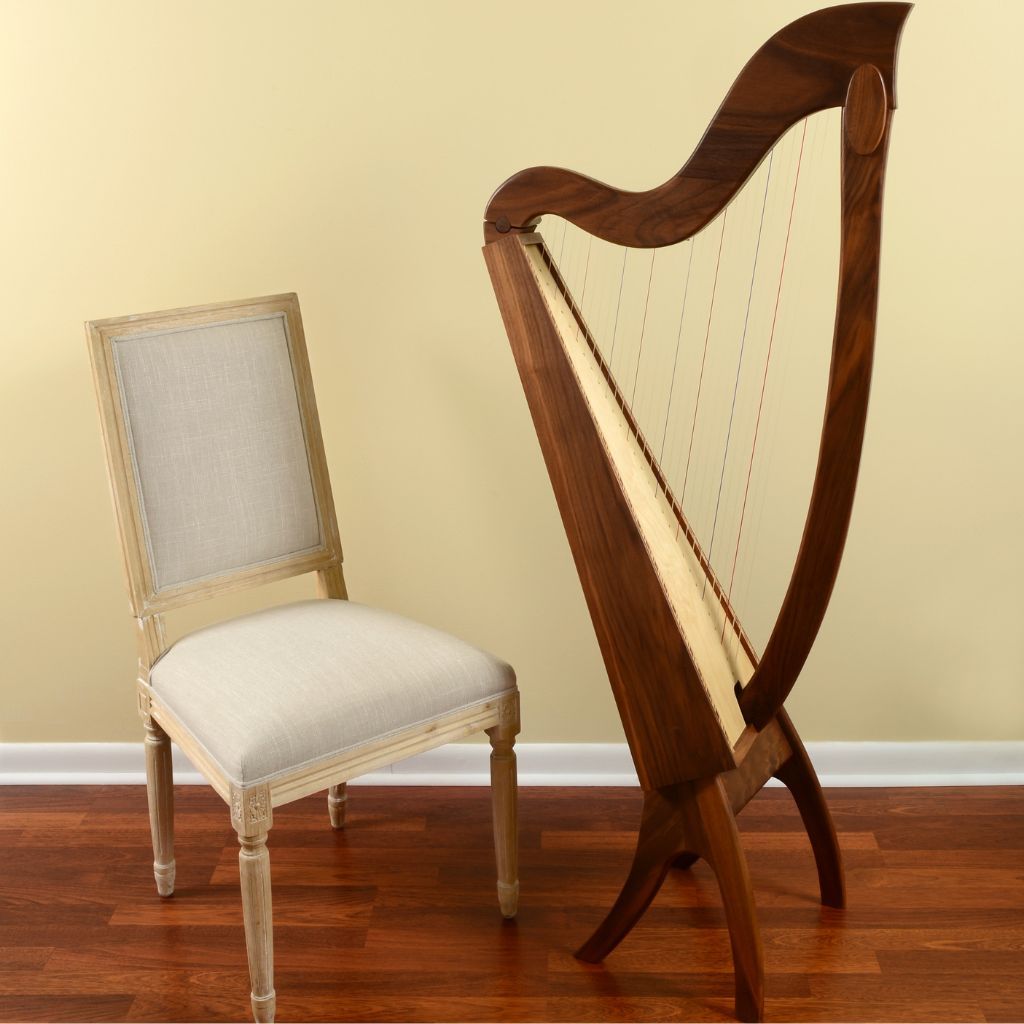
- Triangular frame structure
- Strings are perpendicular to the soundboard
- Variety of sizes, from small lap harps to large pedal harps
- Pedal or lever harps allow for key changes
- Typically played while seated or with the instrument resting on the floor
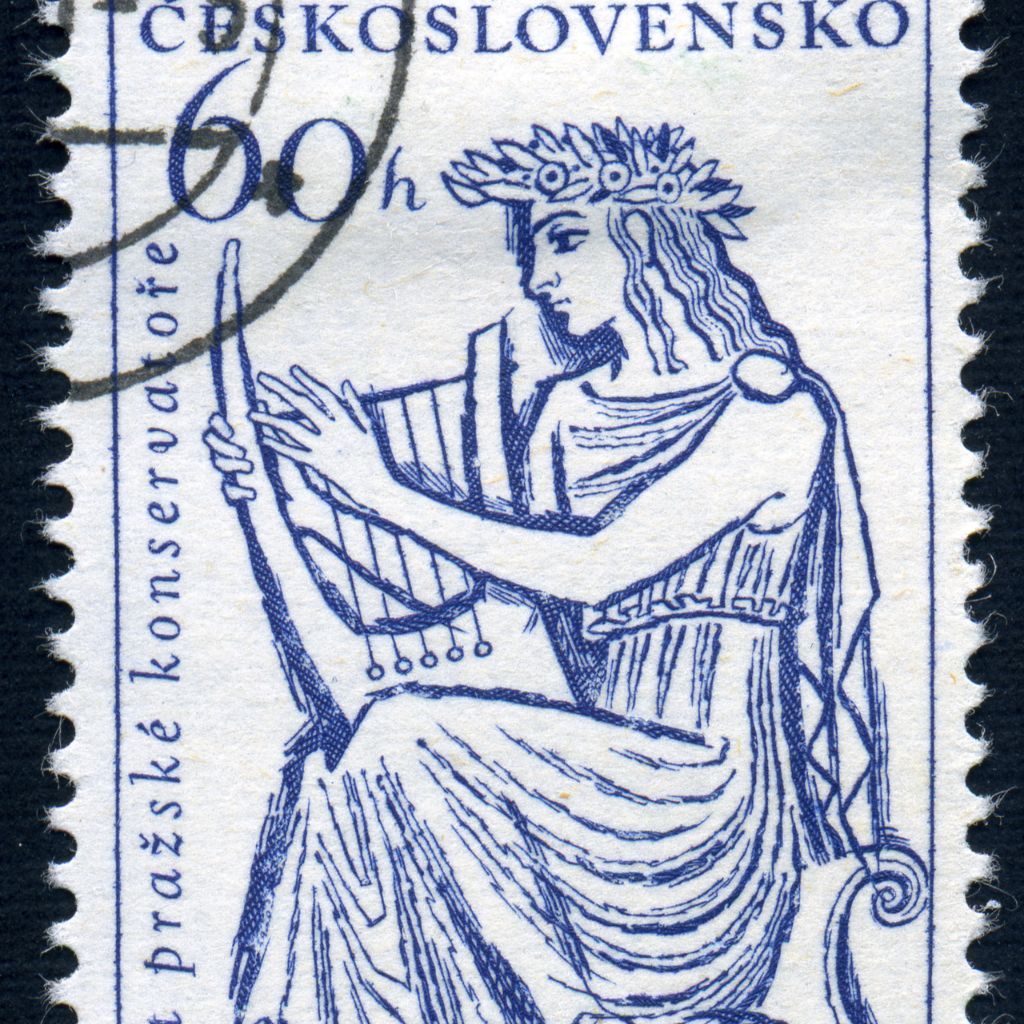
- U-shaped body with a crossbar (yoke) connecting two arms
- Strings are parallel to the soundboard and of similar length
- Usually smaller and handheld
- Fixed tuning with no mechanism for key changes
- Often played while held against the body or cradled in the arm
In essence, these instruments are like separate branches from the same musical tree. Each with their own beautiful leaves, whispering tales through their music.
It’s a symphony of history, design, and sound that brings joy to my ears and stirs my soul.
Now, isn’t that just a lovely thought?
Wait! There’s more…
It’s wise to have an idea about the instrument you are interested in. If you want to know what the best harps are for beginners, read this article!
FAQ's
The main difference between a lyre and a harp is that a lyre has strings attached to a crossbar that sits above a resonating body, while a harp’s strings extend from its body to a fixed arm, creating a triangular frame.
No, a lyre is not just a small harp; it is a distinct ancient stringed instrument with a different structure and playing technique, characterized by a yoke or crossbar from which the strings are suspended, unlike the triangular frame of a harp.
The harp is believed to have originated first, with archaeological evidence dating back as far as 3500 BCE, while the lyre appeared slightly later in history, around 2500 BCE.
A lyre typically has a smaller number of strings of equal length attached to a crossbar, creating a U-shape, whereas a harp has strings of varying lengths that attach directly to the soundboard and form a triangular shape with the frame.




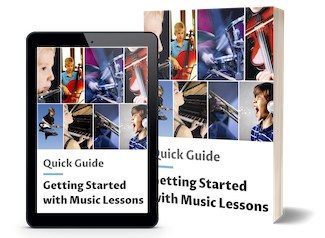






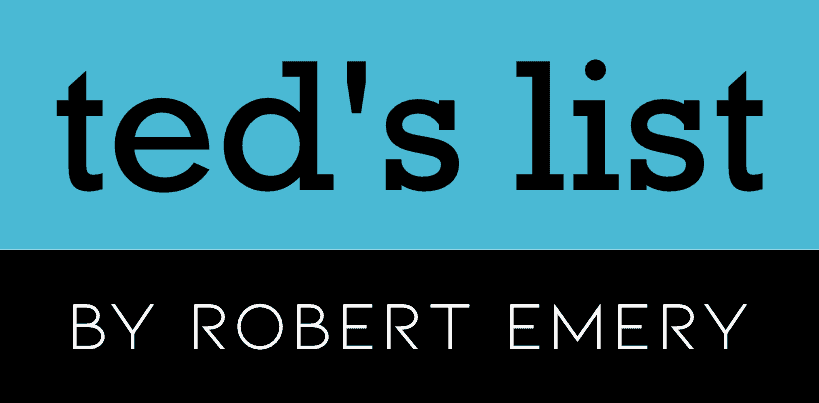
Really appreciated the segment on the origins of the harp and lyre. It’s fascinating to see how these instruments have been a part of human history and culture for millennia, evolving in different ways across the globe. It would be interesting to explore even further how modern musicians are incorporating traditional harps and lyres into contemporary music genres. Are there any artists you’d recommend who seamlessly blend the old with the new? Also, kudos on highlighting less mainstream instruments like the Salvi SALDEL-ESS Delta Ebony – a real gem!
While I appreciate the effort put into distinguishing between harps and lyres, I am not entirely convinced about the accuracy of some points. Particularly, the historical context seems oversimplified. The evolution of these instruments is much more complex and intertwined with cultural phenomena than what is presented here. Citing specific historical sources might lend more credibility to your arguments.
finally someone breaks down the difference between harp and lyre, I’ve been mixing them up forever lol. Big thx for the recommendations, checking out the Lyre Harp by Gear4music!
Anyone know if the Lyre Harp by Gear4music is good for beginners too?
You’ll love the Lyre Harp from Gear4music, Mikey99. It has a great sound for its price. Happy playing!
Hey Bethan Semmens, thanks for this insightful piece! I’ve always been fascinated by the intricate designs of harps and lyres but never really understood how their construction affects their sound. Could you dive a bit deeper into how the physical attributes of these instruments influence the nuances in their sound profiles? Also, any tips on how to start learning to play the lyre would be greatly appreciated. Cheers!